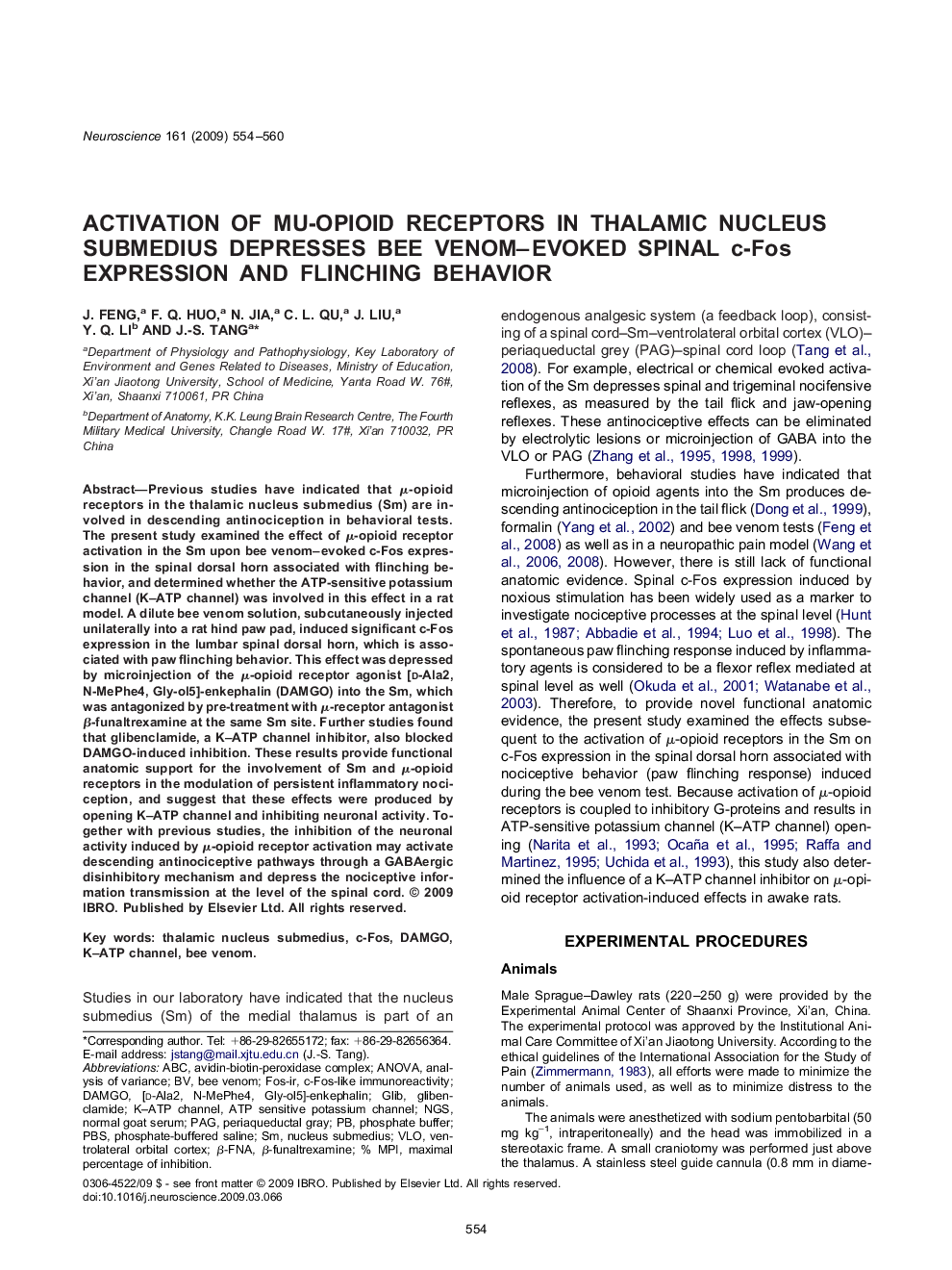| Article ID | Journal | Published Year | Pages | File Type |
|---|---|---|---|---|
| 6278212 | Neuroscience | 2009 | 7 Pages |
Abstract
Previous studies have indicated that μ-opioid receptors in the thalamic nucleus submedius (Sm) are involved in descending antinociception in behavioral tests. The present study examined the effect of μ-opioid receptor activation in the Sm upon bee venom-evoked c-Fos expression in the spinal dorsal horn associated with flinching behavior, and determined whether the ATP-sensitive potassium channel (K-ATP channel) was involved in this effect in a rat model. A dilute bee venom solution, subcutaneously injected unilaterally into a rat hind paw pad, induced significant c-Fos expression in the lumbar spinal dorsal horn, which is associated with paw flinching behavior. This effect was depressed by microinjection of the μ-opioid receptor agonist [d-Ala2, N-MePhe4, Gly-ol5]-enkephalin (DAMGO) into the Sm, which was antagonized by pre-treatment with μ-receptor antagonist β-funaltrexamine at the same Sm site. Further studies found that glibenclamide, a K-ATP channel inhibitor, also blocked DAMGO-induced inhibition. These results provide functional anatomic support for the involvement of Sm and μ-opioid receptors in the modulation of persistent inflammatory nociception, and suggest that these effects were produced by opening K-ATP channel and inhibiting neuronal activity. Together with previous studies, the inhibition of the neuronal activity induced by μ-opioid receptor activation may activate descending antinociceptive pathways through a GABAergic disinhibitory mechanism and depress the nociceptive information transmission at the level of the spinal cord.
Keywords
Related Topics
Life Sciences
Neuroscience
Neuroscience (General)
Authors
J. Feng, F.Q. Huo, N. Jia, C.L. Qu, J. Liu, Y.Q. Li, J.-S. Tang,
